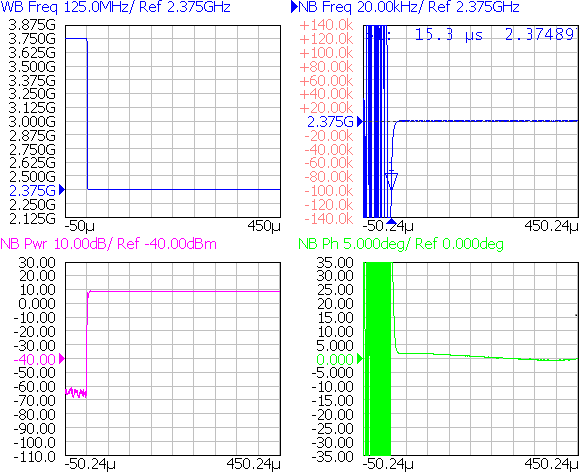When tuning using the LMX2594 (uses the same schematic design as the LMX2594 eval board) I am getting lock times that vary from 120us to > 200us despite the PLLatinum simulation predicting lock times in the ~70us range. The Fosc is 100 MHz and the loop bandwidth is 387kHz. Partial assist is also being used so I would have expected faster than the simulated lock time. I'm trying to achieve a lock time of < 100us. Any advice is appreciated.
-
Ask a related question
What is a related question?A related question is a question created from another question. When the related question is created, it will be automatically linked to the original question.


